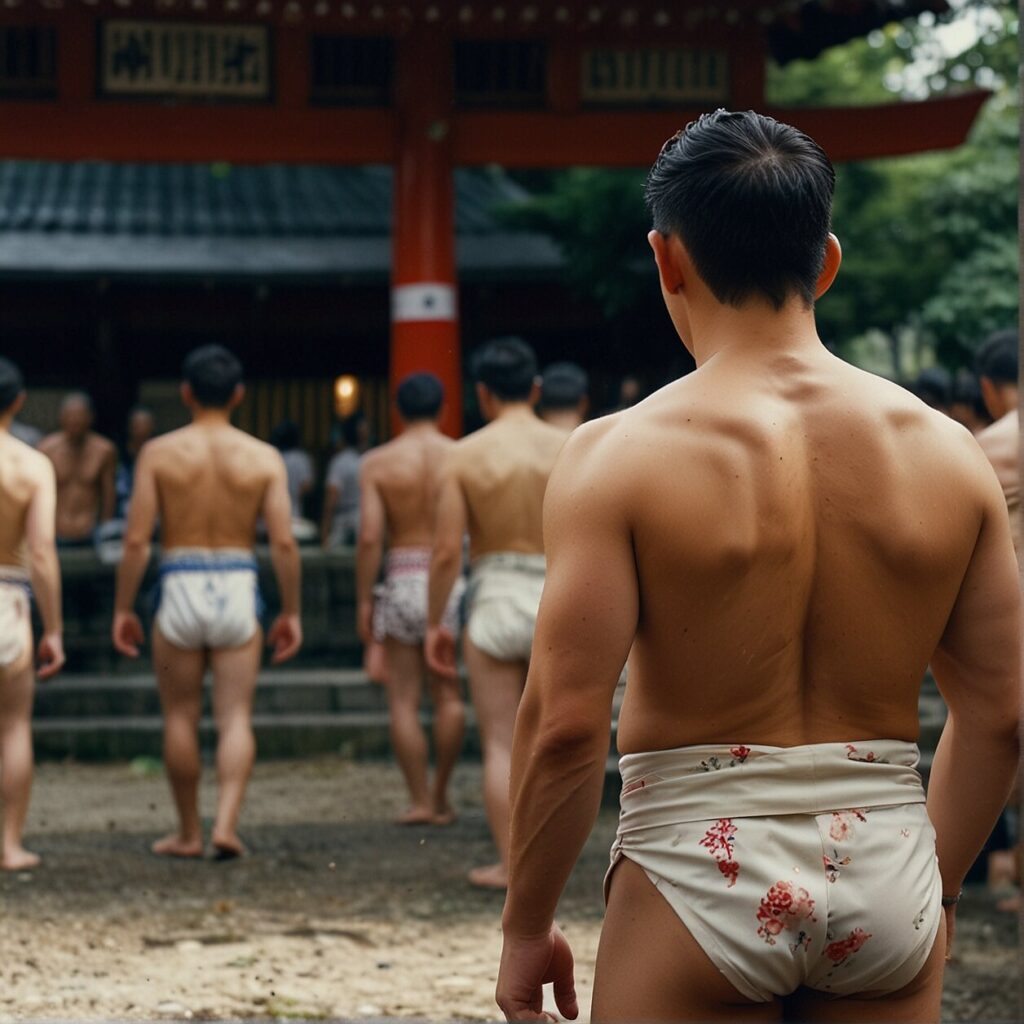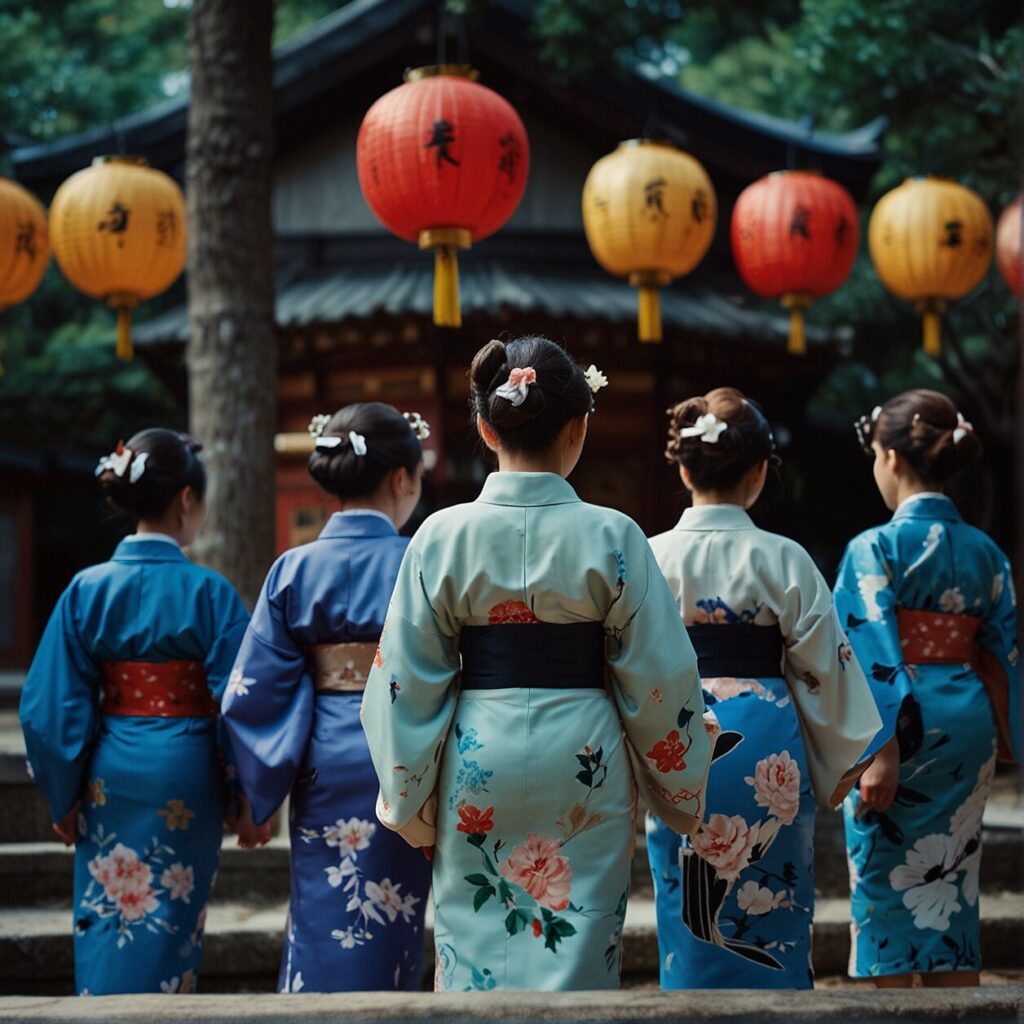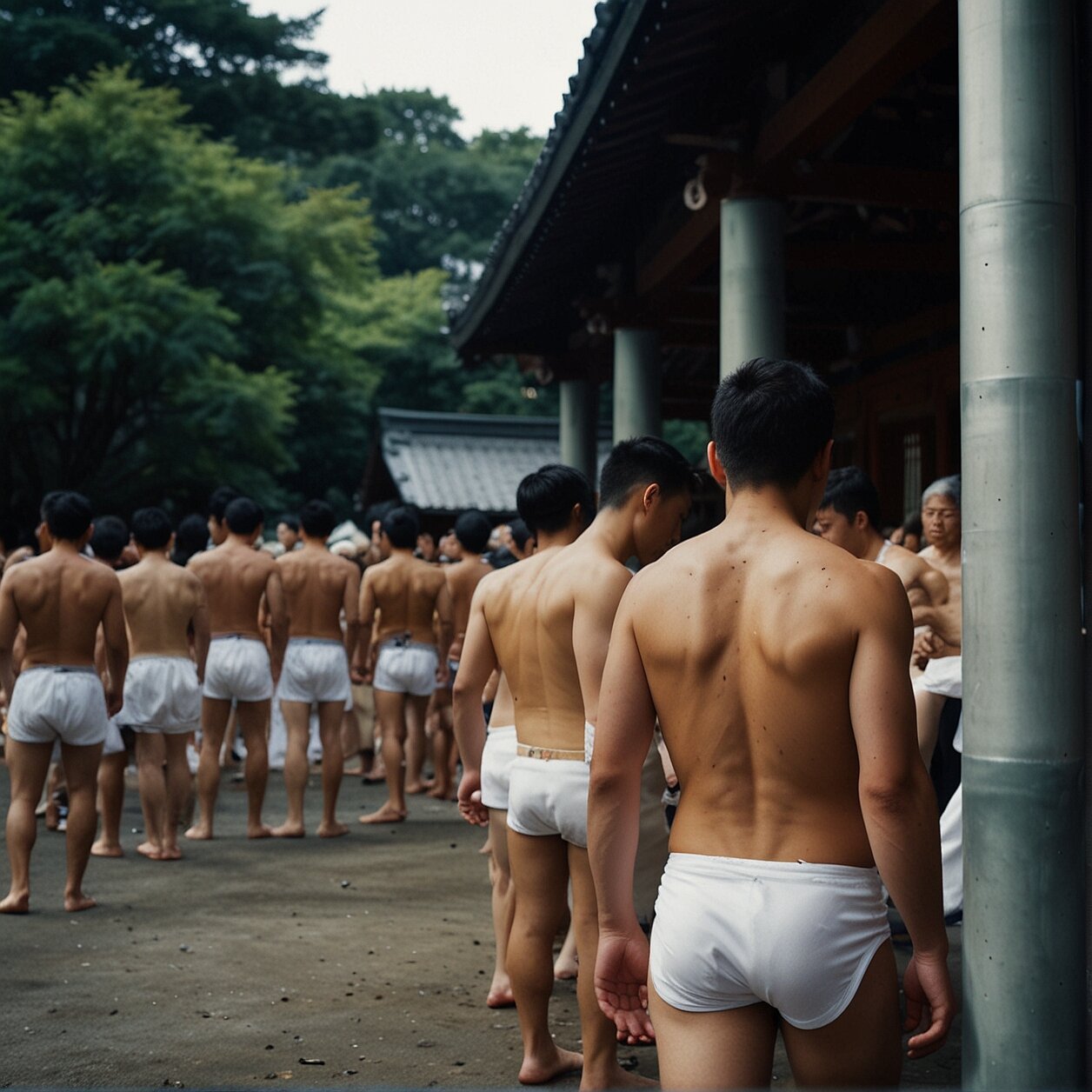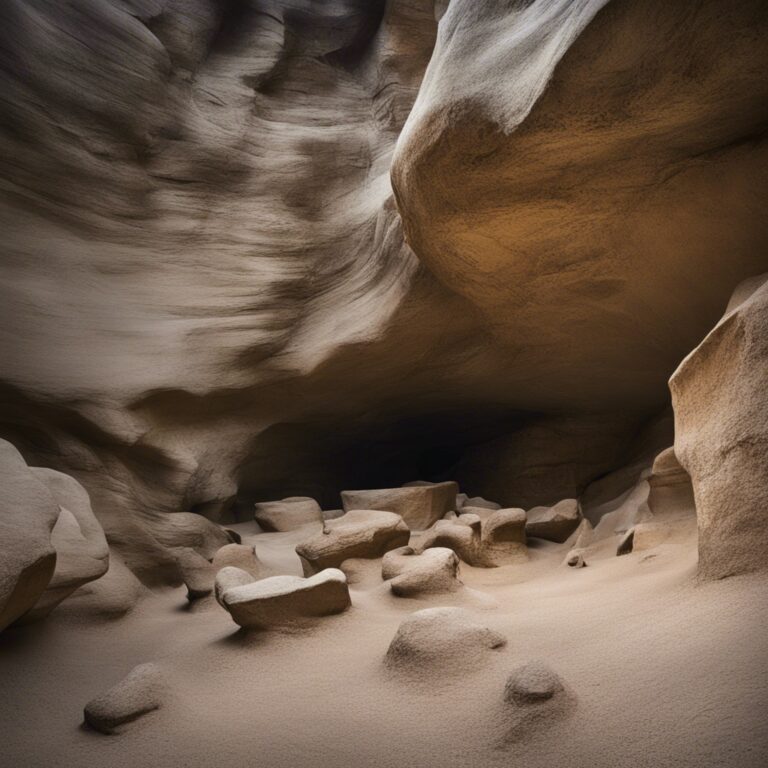Inside Japan’s Naked Festival: A Unique Cultural Experience
Imagine thousands of men, merely clothed in loincloths, jogging boisterously under the cold winter sky, their spirits fueled by tradition, camaraderie and a touch of sake. This is not your ordinary spectacle, but the Hadaka Matsuri – a remarkable festival nestled in the heart of Japan’s cultural tapestry. Held annually, participants from across the globe shed their reservations – and most of their clothing – to take part in this stimulating festival filled with high energy, intriguing rituals, and communal warmth.
- Discover the roots: Glean an in-depth view of the spiritual roots that have nurtured this extraordinary festival to thrive for centuries.
- Rituals unleashed: Explore the rituals and traditions that define the Hadaka Matsuri, lending it its distinct shape and expansive character.
- Join the crowd: Fancy a dip into the sea of humanity? Our guide to participating lays out everything you need to dive right in.
- Expect the unexpected: Prepare for an earthy, human experience that smacks of raw energy, liveliness, and ancient traditions binding together an entire community.
Dive headfirst into the heart of Japan with the Hadaka Matsuri. Dance with tradition, wrestle with new experiences, and feel the warm embrace of acceptance in a vast sea of near-naked humanity. Make no mistake, this isn’t just a festival, it’s a cultural immersion unlike any other.
Unveiling the Hadaka Matsuri: Japan’s Unique Naked Festival
Journeying to the heart of Japan, you’ll find yourself immersed in a rich tapestry of culture, tradition, and festivity unique to this land. Among the many colorful celebrations, the Hadaka Matsuri, or the Naked Festival, stands apart.
This eccentric event takes place yearly at the Konomiya Shrine in central Japan, drawing flocks of eager participants and daring spectators. While its name suggests an explicit scene, let’s clarify. The Hadaka Matsuri isn’t a congregation of entirely unclothed people, but a gathering of thousands of men wearing only the most minimal of traditional garments: fundoshi (Japanese loincloths).
The festival is one of the oldest and most revered in Japan, with its roots trailing back to ancient times. Specifically, it’s celebrated in two key locations: The Okayama prefecture’s Hadaka Matsuri and the Saidaiji Eyo Hadaka Matsuri, each with its own unique character and charm.
Despite the initial shock factor, the Hadaka Matsuri is not merely about nudity. It’s about purification, luck, and the enduring spirit of dedication and camaraderie. This grand spectacle revitalizes this deeply ingrained ethos annually and is an outstanding example of Japan’s commitment to preserving its cultural heritage.
So if you are brave enough to challenge the norm and immerse yourself in this extraordinary festival, pack your bags, your courage, and your spirit of adventure. Just don’t forget to leave your inhibitions at home!
The Spiritual Roots of the Hadaka Matsuri Festival
Commenced over 500 years ago, Hadaka Matsuri, often addressed as the Naked Festival, is centered on the purifying power of nudity in Shintoism, the native religion of Japan, symbolizing the removal of impurities. The festival holds great mythological significance, marking the struggle between two deities over the control of crops and good fortune, rendering it one of the oldest traditions in Japan.
This extraordinary event mainly takes place at Konomiya Shrine, stationed in central Japan. The festival has its roots in the ancient practice of a local noble stripping down and parading through the village to absorb bad luck and evil spirits into his nakedness. Over time, this eventually evolved into a massive event with thousands of participants in the modern era.
Though the festival is primarily male-centric, women also occasionally participate, typically in lighter instances, dressed in simple kimonos. The main event, predominantly attended by men, symbolizes an amusing yet serious race for good luck’s token – the Shingi, a set of sacred wood sticks thrown into the crowd by a priest.
The festival reaches its peak during the Saidaiji Eyo event, considered the most significant and well-attended of all Hadaka Matsuri. This gathering is often marked by a spirited, somewhat chaotic scene as participants, lit by the soft glow of lanterns, scramble in an intense, friendly competition for the Shingi.
To summarize, the spiritual essence of Hadaka Matsuri is essentially about absolving and warding off misfortune while attracting good luck, reflecting on Japan’s deeply ingrained Shinto beliefs and the country’s profound consideration for maintaining balance and harmony in life.

The Rituals and Traditions That Define the Hadaka Matsuri Festival
Immersed in history and cultural importance, Hadaka Matsuri has traditions and rituals that go back centuries. As Japan’s third oldest festival, it assumes a unique dynamic with rituals split into two prominent events, the Konomiya Festival and the Saidaiji Eyo Festival.
The Konomiya Festival, taking place in central Japan at the renowned Konomiya Shrine, epitomizes an intriguing part of this grand celebration. Participants, cloaked only in a bare minimum amount of traditional clothing, gather to endure the cold of winter in hopes of purifying their spirit. A chosen ‘Shin-otokō’, the man of the gods, crosses through the mass of men, letting the impurities transfer to him. It is believed that merely touching this designated individual can rid participants of their misfortune and bring them prosperity for the year ahead.
On the other hand, the Saidaiji Eyo Festival, taking place in Okayama prefecture, features a different yet equally exciting spectacle. Thousands of males braving the icy cold in ‘fundoshi’, a traditional type of Japanese loincloth, await the main event’s highlight. As midnight strikes, the lights turn off, and Buddhist priests throw ‘shingi’ – blessed wooden sticks – along with bundles of willow strips called ‘goko’ into the crowd. The chaos ensues as participants scramble to claim these sacred talismans. Securing a ‘shingi’ or ‘goko’ is believed to ensure a year filled with luck and blessings.
Curious about the peculiarities in each ritual? Various customs and rules govern the behavior of participants. For instance, for the Konomiya Festival, the Shin-otokō is chosen wisely, often an individual who has experienced a significant change in their life or is about to undertake an important venture. At the Saidaiji Eyo Festival, only males aged 23 – considered a ‘yakudoshi’ or unlucky age – or older are permitted to participate in the main event. Despite these differences, these traditions stem from a shared belief in Shinto purification and the promotion of unity, goodwill, and prosperity.
Part culture, part spectacle, each festival offers visitors a unique exploration of Japan’s deep-rooted traditions, bustling energy, and communal spirit like no other event.
Navigating the Naked Fields: A Guide to Participating in Hadaka Matsuri
You’re onboard, thrilled by the vitality of the Hadaka Matsuri, also known as the Naked Festival. You can feel the electric ambience, the fervor, the anticipation. But how should you actually navigate these naked fields?
First things first, it’s crucial to remember that you’re partaking in a religious ceremony at the Konomiya Shrine in central Japan. This is not just any eye-catching event; it has relevance, tradition, and cultural significance interwoven into its core. So, even while in the thrill of the moment, respecting the purpose and solemnity of the event is paramount.
Now, let’s talk about clothing — or the lack thereof. The ‘naked’ aspect of this Naked Man Festival is a touch misleading. Rather than being entirely unclothed, participants traditionally wear a ‘fundoshi,’ a type of Japanese loincloth, and ‘tabi,’ which are Japanese socks. The lack of excess clothing is said to make one pure, as it promotes honesty and modesty.
When it comes to the flow of the event, imagine a festive scene with lively chatter, plenty of sake, and beer flowing freely. The festival’s high point is the ‘Shingi Toss,’ where sacred sticks and bundles of willow strips, believed to bring good luck and prosperity, are tossed by a priest into the crowd from the shrine’s window. It may turn into quite a scramble, so remember, safety first!
Lastly, understanding basic manners and etiquette can help you blend in and respect the culture. Inclusiveness, respect, and a sense of camaraderie are at the heart of Hadaka Matsuri; it’s a chance to unite as a community. So as you immerse yourself in the astonishing body of traditions encapsulated by the festival, hold on to this spirit and enjoy an extraordinary experience like no other.
So, are you ready to navigate the Naked Festival, brimming with culture and vigor? It’s time to take the plunge!

Experience the Extraordinary: What to Expect at the Hadaka Matsuri Festival
Stepping into the Hadaka Matsuri Festival is like taking a plunge into a whirlwind of energy, tradition, and unexpected sights. If you want a prime example of a traditional Japanese festival marked by fervent enthusiasm and palpable energy, this is it. You’ll likely hear the resonating beats of taiko drums long before you glimpse the festival grounds. The powerful rhythms are a heart-stirring accompaniment to this unique cultural spectacle, kindling a sense of anticipation for the festivities which lie ahead.
Crossing the threshold, prepare your senses to be bombarded with a panoply of sights, sounds, and scents. Succulent aromas wafting from the street food stalls provide a counterpoint to the other-worldly spectacle of thousands of nearly-naked men making their way through a sea of spectators.
Around you, the attendees radiate a sense of camaraderie and excitement, while vendors peddle a variety of delectable Japanese street foods. From grilled skewers and fried tempura to traditional mochi, you’ll find plenty of gastronomic delights to sample.
You’re probably wondering about the “naked” part of the Naked Festival. Well, you should know that participants are not entirely disrobed, even though the festival name may suggest so. In reality, participants typically wear a type of Japanese loincloth known as fundoshi. As you watch the parade of fundoshi-clad men, you’ll see that each one is striving to touch or catch the lucky symbols thrown by the priests, believed to bring a year of good fortune.
The raucous, fun-filled atmosphere may seem overwhelming at first. But, as you adjust, you’ll begin to appreciate the surreal magnificence of this distinctive event. Embrace the inexplicable thrill of the crowd and soak in the ambience. After all, it’s not every day you get to witness such an extraordinary showcase of Japanese cultural heritage and communal zeal.
FAQ’S
As we delve deeper into the intriguing, historical journey of the Hadaka Matsuri, you might already have heaps of burning questions bubbling up. Perfectly natural and anticipated, given the inherent uniqueness of the event! And that’s why we’ve prepared this dedicated FAQ section, compiled from some of the most frequently asked queries by first-timers and curious onlookers alike. It’s tailored to clarify doubts, break myths, and offer guidance straight from those who’ve been a part of it all – the unadorned thrill of Hadaka Matsuri. Let’s get those questions answered.
How can I prepare for the Hadaka Matsuri festival?
First things first, you’ll want to ensure that you’re in good physical condition. The festival involves a lot of running and wrestling, and male participants usually spend hours in the cold. Ensure you’re healthy enough to withstand the adrenaline-fueled mayhem. Also, even though being deeply immersed in such an energetic crowd and cold weather might demand a lot of physical endurance, getting a routine health check-up before heading to the festival is always a good idea.
Next, acquaint yourself with the festival’s etiquette. In Hadaka Matsuri, nudity is regarded as a kind of uniform. It’s not an event of voyeurism or exhibitionism, and unduly callous behavior is frowned upon. Remember that the real essence of Hadaka Matsuri lies in purifying oneself and driving away evil spirits, not in frivolous wistfulness. Make sure you respect the sanctity of the event, and follow all the rules and guidelines – including carrying yourself with grace and respect towards the other participants and spectators.
Given that the festival mainly involves male participants, having a sturdy fundoshi (loincloth), the standard traditional attire for this event, is necessary. You might want to buy one in advance and learn how to wear it correctly. Some participants also recommend wearing tabi (traditional Japanese socks) to protect your feet, although they’re not mandatory.
Learning a few handy phrases in Japanese can also be helpful not just for participating in the festival, but also for general communication with locals throughout your visit. Having a basic understanding of the language allows you to engage more fully and respectfully with the tradition and the people who cherish it.
Finally, remember to pack with the weather in mind. February in Japan can be cold, particularly when you’re spending a great deal of time outdoors in minimal clothing. Consider packing warm clothes to wear before and after the festival to ensure you stay comfortable.
Preparing for Hadaka Matsuri is, in many ways, part of the revelry. With adequate preparation, you’ll walk away from this extraordinary event with a smile on your face, unforgettable memories, and – if you’re lucky – some symbol of good fortune in your hands.
What are the safety measures to consider during the Hadaka Matsuri festival?
Ensuring safety during the Hadaka Matsuri festival is paramount. Here are a few key considerations to keep in mind to ensure a safe experience.
Stay Hydrated: The Hadaka Matsuri often takes place in February when temperatures can be chilly. Despite the wintry weather, it’s crucial to stay hydrated, particularly if you are participating in the event. The intensity of the festival is exhausting, adding physical exertion to the mix.
Get the Right Gear: While the festival is popularly known as the ‘Naked Festival’, participants don’t actually go completely naked. They wear a minimal piece of clothing, a type of traditional Japanese loincloth known as ‘fundoshi’. Make sure you are comfortable wearing this attire and it’s securely fastened to prevent any embarrassments or discomfort during the procession.
Physical Fitness: Participating in the Hadaka Matsuri can be rigorous. It’s therefore important for you to assess your own physical and mental preparedness before making the commitment to participate. It’s undoubtedly a fun experience, but not at the cost of your well-being.
Safety Protocols: Lastly, take note of the location of the medical facilities, emergency exists, and adhere strictly to safety instructions provided by the festival organisers. After all, your safety and the safety of others is of utmost importance.
In conclusion, the Hadaka Matsuri is a unique, once-in-a-lifetime spectacle that promises fun and excitement. By respecting the traditions, the crowd, and prioritizing your personal safety, you’re set for an unforgettable experience!
Are there any rules or guidelines to follow during the Hadaka Matsuri festival?
Absolutely, like every traditional event, Hadaka Matsuri also comes with its own set of rules and guidelines that uphold the spirit and integrity of this fascinating festival. These guidelines ensure that the event remains enjoyable, safe, and respectful for participants and spectators alike.
First and foremost, the Hadaka Matsuri is primarily a male-oriented festival. While women can participate in some locations, the majority of attendees are men. Participants hastily prepare for the event by wearing a minimal amount of clothing, typically a loin cloth known as a fundoshi, along with a pair of white tabi socks.
Participants are encouraged to purify themselves through a traditional rite, which includes bathing in cold water. This practice is known as Misogi and is believed to cleanse the individual spiritually before participating in the event.
Respect is a significant part of the event, therefore, any unruly behavior or disrespect towards the event, the shrine, or other participants is strictly frowned upon.
Lastly, capturing the shingi, or sacred wooden sticks, tossed by the shrine priests is a major goal for many participants. Historically, members of local judo clubs are usually the winners of these coveted items due to their agility and physical strength. However, the competition for the shingi is friendly, and violent or overly aggressive behavior is not tolerated.
Remember, the Hadaka Matsuri is a revered festival with cultural, historical, and spiritual importance to the Japanese people. Observing the guidelines and following the traditions not only confirms your respect for the event but also enriches your experience taking part in this extraordinary occasion.
What are some tips for first-time attendees of the Hadaka Matsuri festival?
Sure, you’re all set for your first Hadaka Matsuri, Japan’s famed ‘Naked Festival’. But it sure can’t hurt to have a few extra pointers in your pocket, can it? Here’s our compiled list of additional things to keep in mind.
First and foremost, understand the festival’s purpose. Yes, it comes with elements of fun, excitement and novelty, but it is above all, a deeply spiritual event. Respect the significance the Hadaka Matsuri holds for the Japanese people and other participants. So, while you enjoy the unique nature of the event, remember the deep-rooted traditions and beliefs it represents.
Given the unique dress code – or the lack thereof – warmth can be a problem. Even though the main festivals occur in February or March, these are the coldest months of the year in Japan. It’s a good idea to keep moving as much as possible during the event. Not only will this help you stay warm in the winter chill, but it will also add to the lively and energetic atmosphere characteristic of the festival.
Also, keep in mind that most participants are members of judo clubs – these are skilled individuals who are well-versed in the art of maneuvering and staying balanced. As such, try to avoid any unnecessary confrontations or risky situations during the festival, especially if you’re unfamiliar with judo or other martial arts.
Lastly, the festival is not just for men – it’s an event for everyone to enjoy. Taiko drummers provide live music throughout the day, and you’ll find a variety of mouth-watering street food stalls to keep your energy levels up. Even if you’re not directly participating, relishing in the festival’s jubilant ambiance will make this an experience to remember.
In a nutshell, come prepared with an open mind, a respectful attitude, and be ready to be a part of a communion unlike anything you’ve experienced before.
What is the religious significance of the Hadaka Matsuri festival?
The Hadaka Matsuri festival, otherwise known as the Naked Festival, plays an important role and holds deep religious significance in the spiritual landscape of Japan. As the third-oldest festival in the country, it is steeped in tradition and upheld as a powerful conduit between the physical and spiritual world.
Central to the festival is the ritual of touching the ‘naked male deity’, a symbol of purity and strength in its rawest form. Participants, often clad in minimal clothing, reach out to touch the deity – a ritual believed to ward off evil spirits. It’s a practice built on the idea of transferring impurities and misfortunes from oneself onto the deity, an act in stark contrast to our daily perceptions of cleanliness and impurity.
However, the Hadaka Matsuri festival transcends beyond just dispelling evil spirits – it’s a call for blessings and happiness. Participants engage in this ritual in the hope of invoking blessings for happiness and prosperity in the coming year. It’s a time where individuals come forth to cleanse their spirit, purify their soul, and refuel their life forces.
To see the Hadaka Matsuri festival in action is to witness an extraordinary blend of tradition, spirituality, and physicality, an event steeped in history and cultural significance. And while it might seem strange to outsiders, for the people of Japan, this festival serves as a vivid testament to their enduring faith and the lasting legacy of their ancient traditions.







